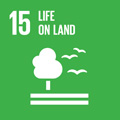- Docente: Marco Sazzini
- Credits: 6
- SSD: BIO/08
- Language: Italian
- Moduli: Marco Sazzini (Modulo 1) Stefania Sarno (Modulo 2)
- Teaching Mode: In-person learning (entirely or partially) (Modulo 1); In-person learning (entirely or partially) (Modulo 2)
- Campus: Bologna
- Corso: First cycle degree programme (L) in Biological Sciences (cod. 8012)
Learning outcomes
At the end of the course, students will acquire basic scientific knowledge essential to understand human evolutionary history, as well as the biological, phylogenetic and adaptive biodiversity of our species. In particular, students will be able to understand the evolutionary drivers of phenotypic and genetic diversity of human populations in relation to their natural, dietary and pathogen environment.
Course contents
The course will provide basic knowledge on human evolutionary history and on how it shaped current patterns of human biodiversity and key human biological traits.
The course contents will be organized according to the following arguments:
Origins and evolution of Homo sapiens
- Evolution of the skull, limbs, and pelvis in relation to the acquisition of the upright posture
- Origins of anatomically modern humans and their diffusion through Paleolithic migrations
-Interactions between Homo sapiens and archaic human species
Human biodiversity
- Principles of Evolutionary Anthropology
- Human intra- and inter-population variability
- Micro-evolutionary processes shaping human genetic and phenotypic diversity
The last part of the course (1 CFU) will be devoted to laboratory activities and to the presentation of methods for extracting human DNA from biological samples and for typing it by means of traditional and high-throughput technologies.
Readings/Bibliography
Slides of the lectures, as well as scientific articles and review papers possibly useful to deepen some of the arguments discussed during the course, will be shared with the students by means of dedicated tools (e.g. Virtuale, Microsoft Teams).
Teaching methods
5 CFU will be supplied by means of lectures.
1 CFU will be supplied by means of laboratory activities focused on the use of protocols for extracting human DNA from biological samples and for typing it by means of traditional and high-throughput technologies.
Assessment methods
The mark will be obtained by means of a one-hour written exam made up of a combination of multiple-choice and open questions regarding the arguments presented during both lectures and laboratory activities.
Teaching tools
Slides of the lectures, scientific articles and experimental protocols used during laboratory activities will be shared with the students by means of dedicated tools (e.g. Virtuale, Microsoft Teams).
Office hours
See the website of Marco Sazzini
See the website of Stefania Sarno
SDGs



This teaching activity contributes to the achievement of the Sustainable Development Goals of the UN 2030 Agenda.
